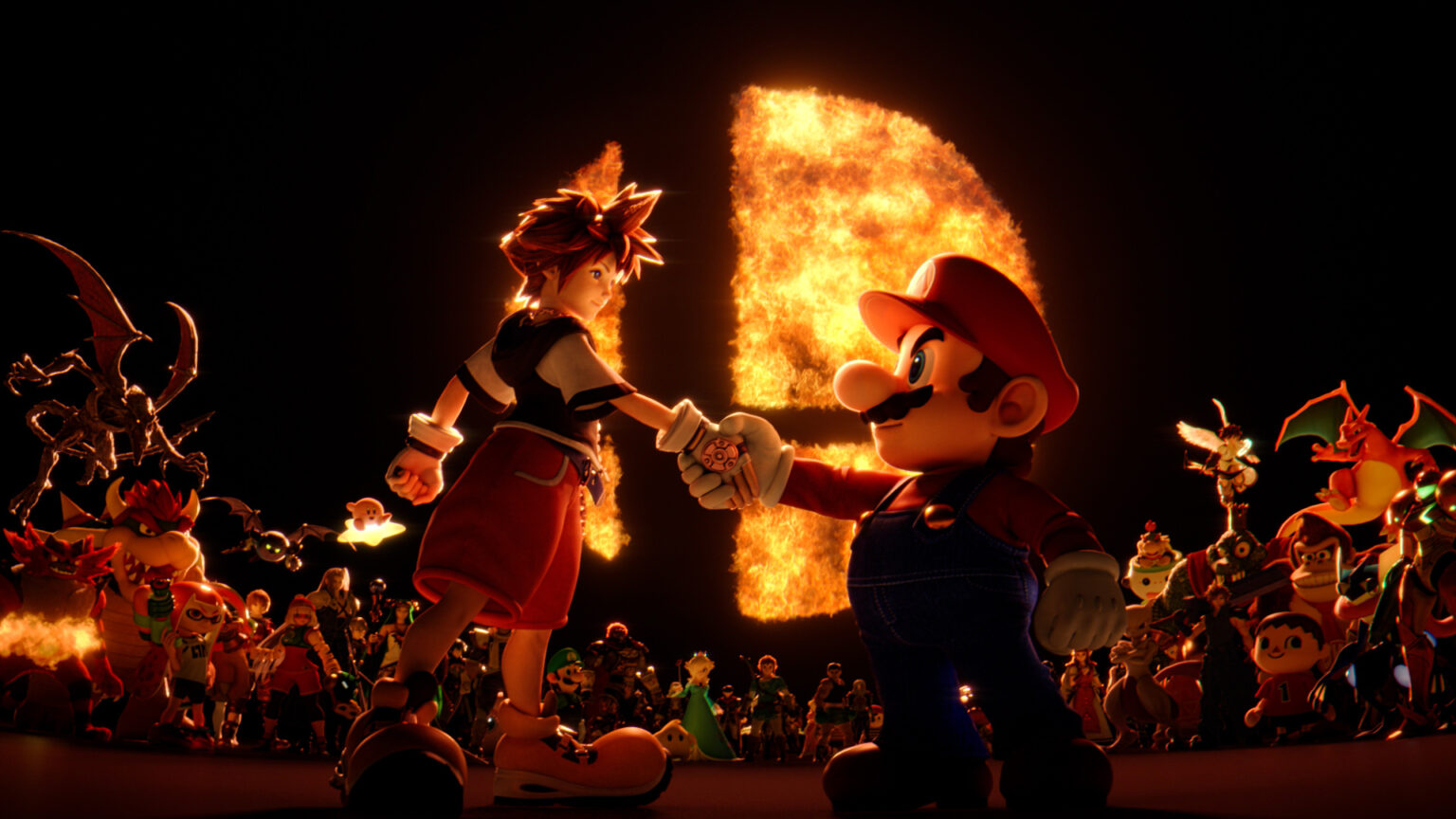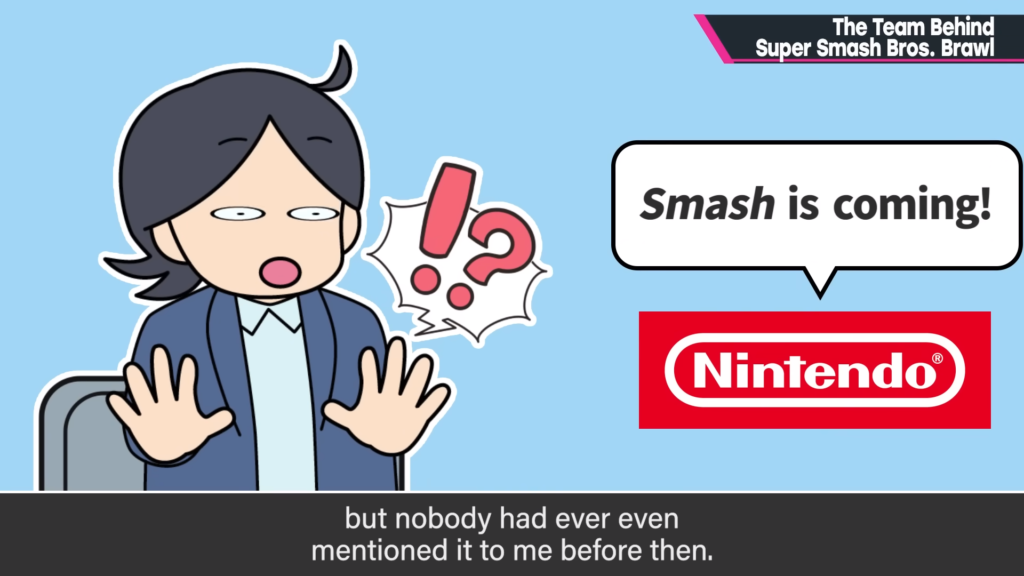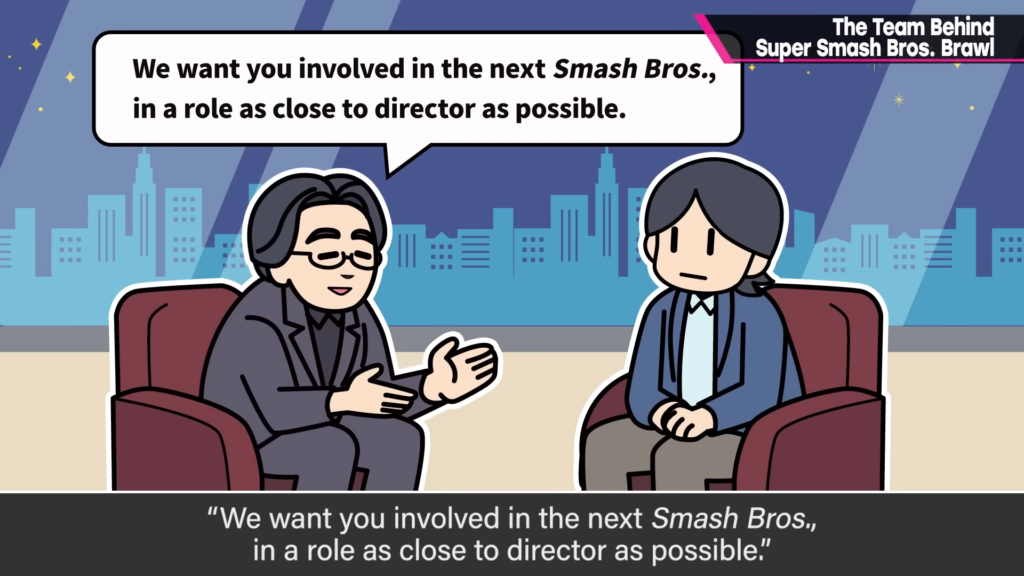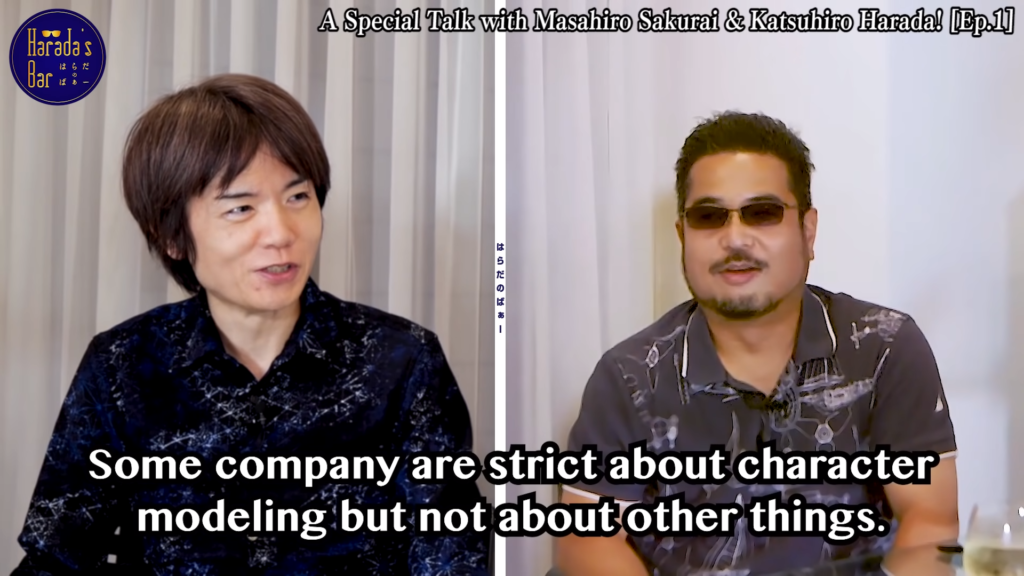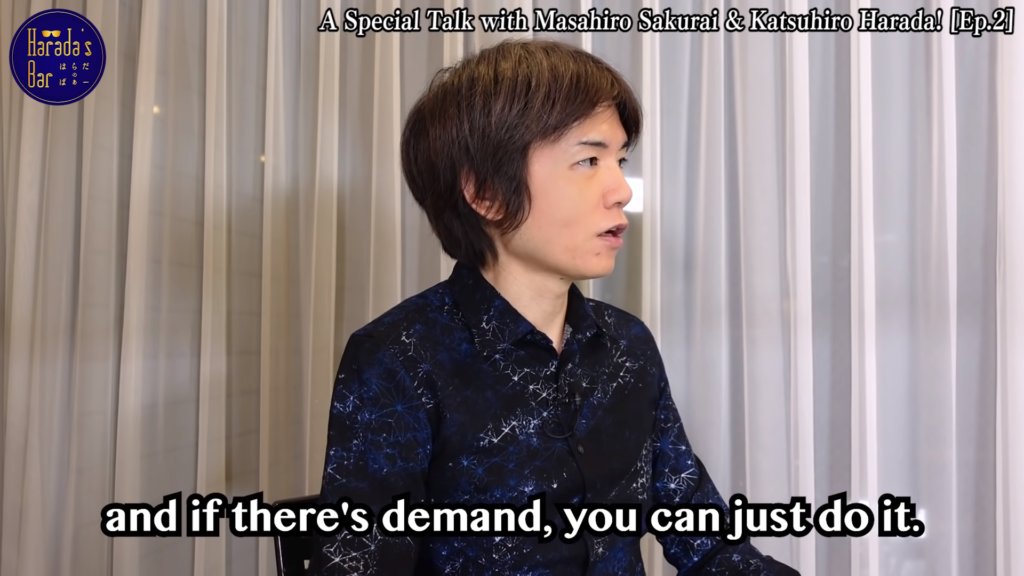Few games have had the same cultural impact as Super Smash Bros. over the gaming sphere in the last decade. From making impossible guest appearances come true to crashing Twitter with a mere announcement, the Smash Bros. franchise has evolved from a niche Nintendo-based platform fighter to the dominant crossover champion it is today.
The series has become synonymous with Nintendo, much like Halo is (or was) with Microsoft and God of War with Sony. Super Smash Bros. Ultimate truly lives up to its name, boasting a massive roster that fans could only dream of during Smash’s early heyday. It is no surprise that Ultimate is widely considered a celebration of gaming as a whole rather than just Nintendo.
This level of achievement was possible not only due to the developers who worked hard on crafting successively bigger and more bombastic games but also thanks to the man who helmed the ship and ensured the project would deliver beyond fan expectations: Masahiro Sakurai.
How Smash Became What We Know
Super Smash Bros. is the brainchild of Sakurai’s innovation and the late Satoru Iwata’s programming, born in the late 90s to great reception by Nintendo. However, the modern version of Smash and its earlier counterpart are fundamentally different beasts, and that distinction stems from Sakurai himself.
Since Smash Ultimate finished its long support cycle in December of 2021, Sakurai opened up a YouTube channel dedicated to assisting video game developers, both newcomers and veterans alike. Dubbed “Masahiro Sakurai on Creating Games,” the channel frequently uploads content highlighting important video game facets along with Sakurai’s own sage advice.
In one of his more recent uploads, titled “The Team Behind Super Smash Bros. Brawl [Grab Bag],” Sakurai provides a behind-the-scenes look at how Brawl came together beyond a developmental perspective.
This video is actually a continuation of a previous one, which delved into the gameplay and design philosophy of Brawl, and how it differs from its fast-paced, technically-demanding predecessor, Melee.
Sakurai explains how the massive popularity of Smash demanded Nintendo to make another game, something he, the previous director, was not personally aware of. He had moved onto freelance work after Melee’s conclusion, leaving HAL Laboratory, and was actually not part of the project or announcement when Brawl was first teased at E3 2005. In fact, he was as surprised as the rest of the onlooking audience, all unaware a new Smash game was on the way.
Unable to answer questions coming his way, Sakurai eventually found himself in a late-night meeting with Satoru Iwata, who was the President of Nintendo at the time. Iwata went on to say that though he would like Sakurai to be involved with the new project somehow, he also made it clear that Nintendo would go forward with the next game whether Sakurai was on board or not when Sakurai broached the question.
Sakurai was hesitant to join because of his obligations as a freelancer, owing commitments to various other projects he had recently signed up for. To jump ship to a new Smash game, regardless of the weight Smash carried, would be a very bad look. To this day, Sakurai says he feels apologetic to the projects he had to turn down.
Iwata went on to say that, at worst, the new Smash game could be a rehash of Melee and all its 26 characters ported to the Wii, with virtually no difference across games except for the much desired network feature fans were clamoring for. To Sakurai, this “new” Smash game did not sound new at all.
The pressure was on. Sakurai was aware that Iwata wanted him on board to helm the project as he was hard-pressed to find someone else for that role. Even Eiji Aonuma of The Legend of Zelda fame made a published statement on Weekly Famitsu going as far as to say that a Smash game without Sakurai manning the ship would spell the end of the franchise.
So, wanting to see Iwata’s (and his own) vision realized, Sakurai agreed to take on the position. To assist, Iwata formed a development team and staff who would work alongside Sakurai in Brawl’s development. Brawl also stands apart in the franchise, being a game where the development team is completely new and built around a freelance director instead of reusing the previous team. But that shows how much faith and responsibility were placed on Sakurai’s shoulders.
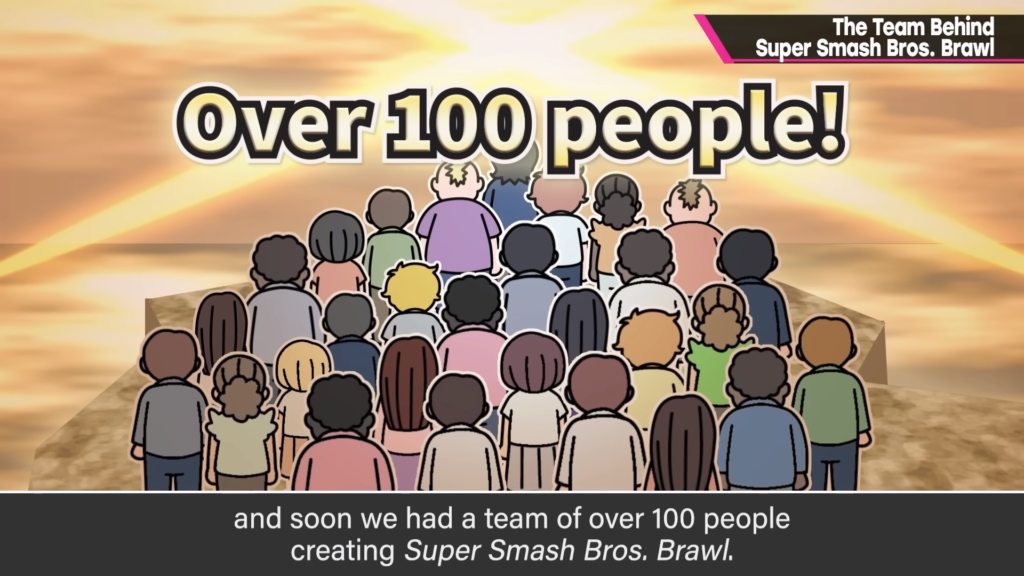
The Sakurai Conundrum
Smash has become the institution it is today under the guidance and curation of its director, Masahiro Sakurai.
“Mr. Iwata had a very keen eye for people,” Sakurai said, and he was right.
Without Sakurai, Smash simply would not BE. Sakurai makes it objectively clear how, if not for his involvement in Brawl, the Smash series would likely not have continued in any capacity.
During Brawl’s development, while the main staff worked hard, Sakurai took it upon himself to draft design docs for every single character to pitch to their owners for approval in Smash.
Eiji Aonuma, in his previously mentioned column publication, holds Sakurai in high regard for all the games he includes with high esteem, touting Sakurai’s ability to weave so many different elements from different directions into one cohesively oriented product. From this, we can see how much Smash relies on Sakurai both for direction and collaboration. It is Sakurai who is responsible for successfully convincing various IP holders to allow their characters to shine in Smash.
In an interview with Katsuhiro Harada as part of the Harada’s Bar YouTube series, Harada and Sakurai discuss some of the difficulties the latter faces when pitching character requests to companies. Sakurai said that some companies would be strict about the way a character was to be modeled, whereas others would be stringent on the behavior of said character.
Harada then jokingly asks if they (Bandai Namco) were lenient in this aspect to which Sakurai refutes the statement without hesitation. Though funny, it shows just how many hoops and hurdles Sakurai must navigate through to successfully approve a character in the eyes of a company.
Had it not been for him, many of the guest characters many fans take for granted would have wound up on the chopping block, and Smash would be in a sorrier state for it. It has also been mentioned that Final Fantasy VII’s Cloud Strife was one of these characters.
Earlier, I said that Smash Ultimate lives up to its name. However, Ultimate is a Western designation. The game bears a different moniker in Japan: Super Smash Bros. Special. When putting this title into context with Sakurai’s promise to Satoru Iwata, to create a Smash game for the then upcoming console, the Switch, the Special designation hits that much harder. There was a big reason why Sakurai pulled out all the stops for this game, and it shows.
The chance of there being another Smash game (or any game) like Ultimate is slim. It has earned its name for the foreseeable future, and I do not envy any director or developer that has to come in and try to one-up it.
So Where Does that Leave Us?
Smash Bros., as we know it, is currently basking in its Golden Age. Ending with a game that contains 89 characters, an enormous amount of stages, and countless classic music tracks, Ultimate is quite the high note to end on.
However, Smash is a video game that generates a level of demand and notoriety that few others can match, and it would be foolish of Nintendo not to capitalize on its cash cow for the sake of preserving integrity or artistic merit.
The next Smash game is not a matter of “IF” but a matter of “when.” With the Nintendo Switch slowly approaching the end of its life cycle, a new console will appear to take its place. A new Nintendo Console means new Nintendo first-party games to replace their forerunners, including Smash.
That leaves us with several options.
1. Repackage Ultimate for the New Console
This honestly appears to be a sensible choice. It would be a tall order to try and top what Sakurai and his team achieved with Ultimate, considering the licensing nightmare that Ultimate is with its massive roster and many special guest characters. Trying to pull this off again would be something of a pipe dream, even with Sakurai on board.
Therefore, it could be viable for Nintendo to port Ultimate over to a new console to continue the game’s longevity and have a Smash game that can utilize the new system’s capabilities, which hopefully includes a more robust netcode and online suite (something Ultimate objectively is terrible at doing).
Not only that, Nintendo could even try to add even more DLC characters to Ultimate’s roster to justify a reason to purchase this game for the new console. It would give older players more reasons to pick up the game and newer ones to jump in on the craze. We have seen this work for Mario Kart 8, and that game is still being updated to this day. Who’s to say it can’t be the same for Smash?
2. Restart with Trimmed Down Roster
Ultimate’s roster is its biggest selling point and downfall. Having all these classic characters sharing a single cartridge together is undoubtedly a legal nightmare. To avoid this for a future game, the development team might vie for a more in-house roster that would not pose as much of an obstacle as Ultimate’s.
Thus, the next Smash game would be a reboot of sorts, starting off with a fresher slate. This is something that previous games have not done before, where bigger = better seems to be the name of the game.
To compensate for a smaller roster, Smash could introduce a more robust fighting suite that approaches what Melee offers, a game that possesses the second-smallest roster in the series but boasts the most intricate, insane, and in-depth mechanics seen in a fighting game anywhere.
Having the options for a more hardcore and “harder” fighting game is not an objectively bad thing. The casual playerbase, which makes up a majority, won’t even care if those mechanical options exist or not. Allowing players to push a game to its absolute limit is a great way to keep it relevant and extend its longevity past many other games’ prime.
Just look at Melee.
3. Outdo Ultimate
Probably the most outlandish option out of the ones mentioned here, trying to outshine Ultimate is a potential path to take. Though it could take years, legal battles, and licensing hurdles that are a negotiator’s dream, a game that is bigger than Ultimate is not outside the realm of impossibility.
However, this option hinges entirely on one thing: Sakurai, himself.
If Sakurai is on board for the next Smash Bros. game, anything is possible. If there is anyone who can outdo their own work, it’s him.
Sakurai, in his discussion with Harada, broached the topic of retirement at the age of 60 in the gaming industry. They discuss how life expectancy has increased in modern times and how the question of still contributing to society after the purported age of retirement is on many people’s minds, regardless of the industry.
In the discussion, Sakurai said this:
“If you can still do what you’re good at and if there’s a demand, you can just do it. If not, you can change what you do.”
This line of thinking really summarizes how Sakurai has carried himself over the years, going from big project to project, always outdoing his previous work. In fact, his entire YouTube channel is a testament to his work ethic and passion for his craft, continuously creating content and work to contribute to the spaces he inhabits. Who else would, in their free time, create completely free, ad-less video content on YouTube dedicated towards aspiring video game developers and the like? Sakurai would.
The conversation of retirement has come up a lot for the man, especially in regards to Smash, with each successive game supposed to be his “last” one before he calls it quits. However, because of his dedication and refusal to let Smash go without him, he creates projects that are truly special. At this point, it’s hard to separate the creator from his creation and imagine a Smash game without Sakurai being involved somehow.
It is both a boon and curse. Because of how attached Sakurai is to the franchise, he (and Nintendo) have not had the time to find and train someone who could inevitably take his place one day. In an industry where so many different project leaders and heads come and go, there is no one out there to replace Sakurai, even according to the man himself.
That is not to say we wish for someone to take his place. It is to recognize just how much impact one passionate man has had on a series that has impacted so many of us around the world.
To that, no matter what future is out there for Smash, I want to say
“Thank you, Sakurai-san.”
Stay tuned at Gaming Instincts via Twitter, YouTube, Instagram, and Facebook for more gaming news.
No related posts.



